Text
The universe is still expanding at an accelerating rate, but it may have slowed down recently compared to a few billion years ago, early results from the most precise measurement of its evolution yet suggested Thursday.
While the preliminary findings are far from confirmed, if they hold up it would further deepen the mystery of dark energy—and likely mean there is something important missing in our understanding of the cosmos.
These signals of our universe's changing speeds were spotted by the Dark Energy Spectroscopic Instrument (DESI), which is perched atop a telescope at the Kitt Peak National Observatory in the US state of Arizona.
Continue Reading.
131 notes
·
View notes
Text
Do You Love the Color of the Sun?

Get dazzled by the true spectrum of solar beauty. From fiery reds to cool blues, explore the vibrant hues of the Sun in a mesmerizing color order. The images used to make this gradient come from our Solar Dynamics Observatory. Taken in a variety of wavelengths, they give scientists a wealth of data about the Sun.
Don't miss the total solar eclipse crossing North America on April 8, 2024. (It's the last one for 20 years!) Set a reminder to watch with us.
34K notes
·
View notes
Text

Press release for this Canadian study [Metabolomic and immune alterations in long COVID patients with Chronic Fatigue Syndrome]:
“We do not actually believe that long COVID is a separate new disease,” explains rheumatologist and clinical immunologist Jan Willem Cohen Tervaert, professor of medicine, who is an expert in fatigue associated with rheumatic illnesses.
“Some symptoms — such as the loss of taste and chest pain — are very specific for COVID, but we see a common pathway with ME/CFS, which leads to the same fatigue, brain fog, post-exertional malaise, widespread pain and non-refreshing sleep,” he says.
2K notes
·
View notes
Text

Engineered MgO nanoparticles: A promising path to synergistic cartilage and bone therapy
In a recent study published in Science Advances, researchers from Nanjing Drum Tower Hospital and others have unveiled a promising approach for treating osteoarthritis (OA) using engineered magnesium oxide (MgO) nanoparticles.
Osteoarthritis, a widespread joint disorder affecting millions globally, has long lacked efficient and cost-effective therapeutic solutions. The new method involves targeted regulation of magnesium ions (Mg2+) to address both bone and cartilage issues associated with OA synergistically.
This innovation not only demonstrates the potential of magnesium in halting cartilage damage but also showcases the effectiveness of MgO nanoparticles encapsulated in microspheres for sustained release, providing a more convenient and durable treatment option.
Read more.
21 notes
·
View notes
Text
How was complex life able to develop on the inhospitable early Earth? At the beginning there must have been ribonucleic acid (RNA) to carry the first genetic information. To build up complexity in their sequences, these biomolecules need to release water. On the early Earth, which was largely covered in seawater, that was not so easy to do.
In a paper published in the Journal of the American Chemical Society (JACS), researchers from the team of LMU professor Dieter Braun have shown that in RNA's struggle with the surrounding water, its natural recycling capabilities and the right ambient conditions could have been decisive.
Continue Reading.
70 notes
·
View notes
Text
decided to look up if “banana bat” was an actual species of bat and not only is it real, but this is what it looks like


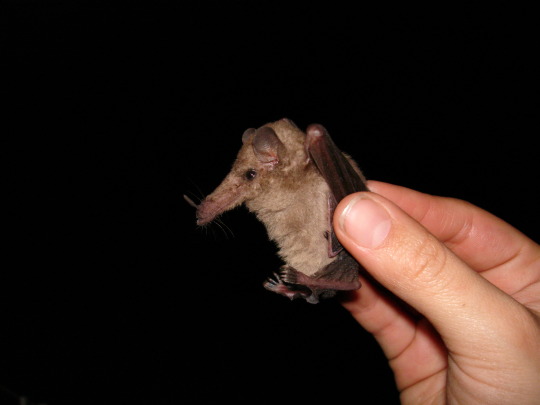

4K notes
·
View notes
Text


The lighting under the bridge in Guangzhou, makes it look like a crescent moon in the water! 🌙 By Yier Wang
16K notes
·
View notes
Text

Hoy hace 8 años que llegué a Tumblr. 🥳
1 note
·
View note
Text
THE OLDEST BLACK HOLE IN THE UNIVERSE!!
Blog#379
Wednesday, February 28th, 2024.
Welcome back,
Astronomers using the James Webb Space Telescope (JWST) have detected the earliest known black hole. Located more than 13 billion light-years away, it dates to a mere 400 million years after the Big Bang.
The black hole lies at the center of a galaxy called GN-z11, which, at the time of its discovery in 2016, was the oldest galaxy ever spotted. But what has shocked researchers about this early black hole is its large size.

“It’s not its age that is surprising, it is the fact that it is already so big so early in the universe, which is difficult to explain with standard theories,” Roberto Maiolino, a co-author of the study and astrophysicist at the University of Cambridge in the United Kingdom, tells Newsweek’s Jess Thomson.
Black holes are incomprehensible quantities of matter stuffed into a relatively small space. Because they’re so dense, their gravitational pull is powerful enough to suck in anything that comes close, including light.
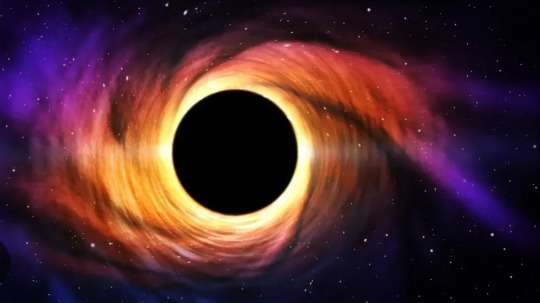
As a result, black holes can’t be observed directly—scientists can only see their effect on their surroundings.
In the case of the galaxy GN-z11, researchers had already noticed it was unusually bright. To be so luminous, “it would have required a large number of stars packed in such a small volume,” Maiolino tells NPR’s Ari Daniel.

But observations from Webb revealed the galaxy’s bright light doesn’t come from stars—instead, it’s from hot gas swirling around the black hole as it gets sucked inside. The findings were published Wednesday in the journal Nature.
“These authors have made a persuasive case that there is a black hole,” Priyamvada Natarajan, an astrophysicist at Yale University who did not contribute to the findings, tells NPR.

In November, Natarajan and other astronomers announced the discovery of what was, at the time, the earliest known black hole, dating to 470 million years after the Big Bang. The Webb telescope played a role in that discovery as well.
That black hole was also unexpectedly massive—between 10 million and 100 million times the mass of our sun.

“It’s just really early on in the universe to be such a behemoth,” Natarajan told Marcia Dunn of the Associated Press at the time.
The newly discovered black hole is roughly 1.6 million times as massive as our sun, according to Live Science’s Ben Turner.
Originally published on www.smithsonianmag.com
COMING UP!!
(Saturday, March 2nd, 2024)
" HOW OLD IS PHOENIX A BLACK HOLE??"
144 notes
·
View notes
Text
Your worth as a person has nothing to do with your romantic or sexual history or status.
2K notes
·
View notes
Text
Dinosaurs' range of locomotion made them incredibly adaptable, University of Bristol researchers have found. In a new study, published today in Royal Society Open Science, findings show that the first dinosaurs were simply faster and more dynamic than their competitors, and it's why they were able to dominate the Earth for 160 million years.
The researchers compared the limb proportions of a broad array of reptiles from the Triassic, the period of time from 252 to 201 million years ago, when dinosaurs first appeared and rose to prominence. They identified which of these ancient beasts was quadrupedal (four-footed) or bipedal (two-footed), and also looked at their cursoriality index, a measure of their running ability.
Continue Reading.
65 notes
·
View notes
Text

[2612/11080] Common loon - Gavia immer
Also known as: great northern diver
Order: Gaviiformes
Family: Gaviidae (loons or divers)
Photo credit: Annie Lavoie via Macaulay Library
764 notes
·
View notes
Text
a short clip showing how a house centipede restrains and envenomates a spider. his prehensile walking legs wrap around each of the spider’s limbs, immobilizing it while his flexible forcipules (modified venom-delivering legs) deliver a fast-acting sting.
(Scutigera coleoptrata, Steatoda triangulosa)
983 notes
·
View notes
Photo
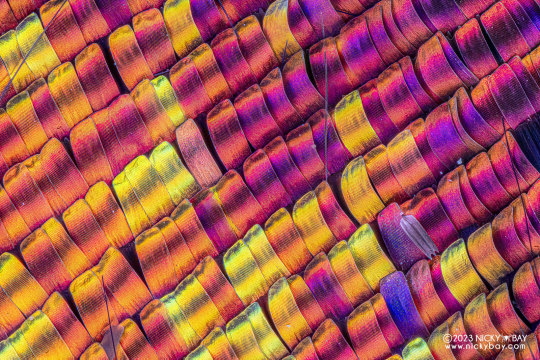

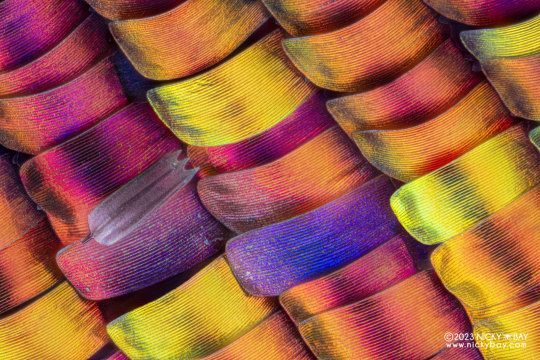
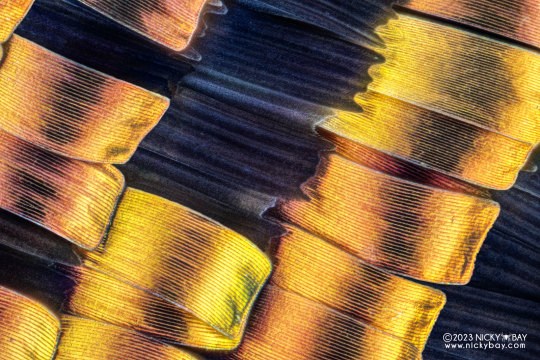


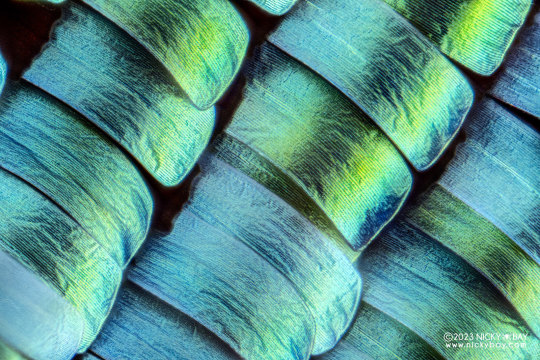
Madagascan sunset moth (Chrysiridia rhipheus) wing scales at 50x magnification
Photos by Nicky Bay // Website // Facebook
Shared with permission; do not remove credit or re-post!
The moth itself:


Photos by sympiotr
5K notes
·
View notes





